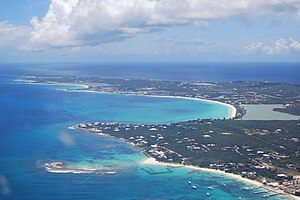
Joshua Barney was an American Navy officer who served in the Continental Navy during the Revolutionary War. He later achieved the rank of commodore in the United States Navy and also served in the War of 1812.

Louis-René Madelaine Le Vassor, comte de La Touche-Tréville was a French Vice-admiral. He fought in the American War of Independence and became a prominent figure of the French Revolutionary Wars and of the Napoleonic wars.

HMS Centaur was a 74-gun third rate of the Royal Navy, launched on 14 March 1797 at Woolwich. She served as Sir Samuel Hood's flagship in the Leeward Islands and the Channel. During her 22-year career Centaur saw action in the Mediterranean, the Channel, the West Indies, and the Baltic, fighting the French, the Dutch, the Danes, and the Russians. She was broken up in 1819.
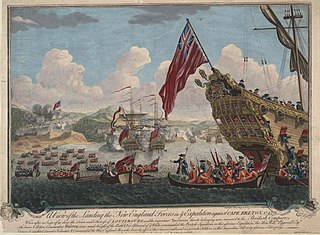
The siege of Louisbourg took place in 1745 when a New England colonial force aided by a British fleet captured Louisbourg, the capital of the French province of Île-Royale during the War of the Austrian Succession, known as King George's War in the British colonies.
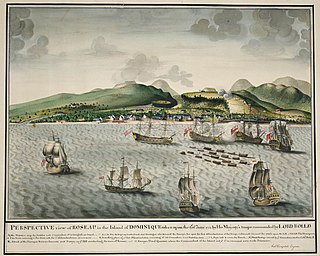
The Invasion of Dominica was a British military expedition to capture the Caribbean island of Dominica in June 1761, as part of the Seven Years' War.

The invasion of Martinique was a successful British amphibious operation against the French colony of Martinique that took place between 30 January and 24 February 1809 during the West Indies campaign of 1804–1810 of the Napoleonic Wars. Martinique, like the nearby island of Guadeloupe, was a major threat to Britain's trade in the West Indies, providing a sheltered base from which privateers and French Navy warships could raid British merchant shipping and disrupt the trade routes that maintained the economy of the United Kingdom. Both islands also provided a focus for larger-scale French operations in the region and in the autumn of 1808, following the Spanish alliance with Britain, the Admiralty decided to order a British squadron to neutralise the threat, beginning with Martinique.
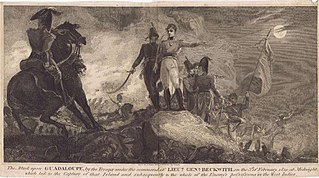
The Invasion of Guadeloupe was a British amphibious operation fought between 28 January and 6 February 1810 over control of the Caribbean island of Guadeloupe during the Napoleonic Wars. The island was the final remaining French colony in the Americas, following the systematic invasion and capture of the others during 1809 by British forces. During the Napoleonic Wars, the French colonies had provided protected harbours for French privateers and warships, which could prey on the numerous British trade routes in the Caribbean and then return to the colonies before British warships could react. In response, the British instituted a blockade of the islands, stationing ships off every port and seizing any vessel that tried to enter or leave. With trade and communication made dangerous by the British blockade squadrons, the economies and morale of the French colonies began to collapse, and in the summer of 1808 desperate messages were sent to France requesting help.

A British invasion of Martinique took place in January 1759 when a large amphibious force under Peregrine Hopson landed on the French-held island of Martinique and unsuccessfully tried to capture it during the Seven Years' War. Cannon fire from the British fleet was ineffective against the fortress at Fort-Royal due to its location high on the cliffs, and there were no suitable landing places nearby. Unknown to the British commanders, French governor Francis de Beauharnais had not been resupplied for some months, and even a brief siege would have led to the fort's capitulation. However, Moore and Hopson decided instead to investigate the possibility of attacking Martinique's main commercial port, Saint-Pierre. After a desultory naval bombardment on 19 January that again had little effect on the port's defences, they withdrew, and decided instead to attack Guadeloupe, home to a significant body of French privateers. The expedition was successful at Guadeloupe, which surrendered to them in May 1759. In 1762 a British force captured Martinique.
HMS Hippomenes was a former Dutch corvette built in Vlissingen in 1797 for the Batavian Republic. The British captured her in 1803 and she served with the Royal Navy until sold in 1813. With the Royal Navy she participated in two notable single-ship actions in the West Indies.
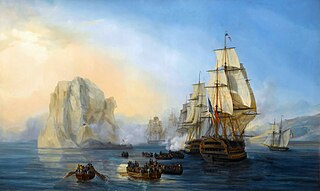
The Battle of Diamond Rock took place between 31 May and 2 June 1805 during the Napoleonic Wars. It was an attempt by Franco-Spanish force dispatched under Captain Julien Cosmao to retake Diamond Rock, at the entrance to the bay leading to Fort-de-France, from the British forces that had occupied it over a year before.
Vice-Admiral James Wilkes Maurice was an officer of the Royal Navy during the French Revolutionary and Napoleonic Wars. Unlike his contemporaries who won fame commanding ships, Maurice gained accolades for his command of a number of island fortresses.
HMS Ballahoo was the first of the Royal Navy's Ballahoo-class schooners, vessels of four 12-pounder carronades and a crew of 20. The prime contractor for the vessel was Goodrich & Co., in Bermuda, and she was launched in 1804. She patrolled primarily in the Leeward Islands, taking several small prizes, before an American privateer captured her in 1814 during the War of 1812.
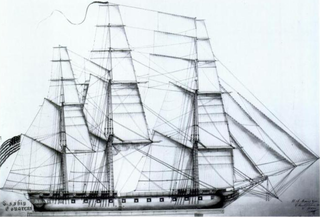
The West Indies Squadron, or the West Indies Station, was a United States Navy squadron that operated in the West Indies in the early nineteenth century. It was formed due to the need to suppress piracy in the Caribbean Sea, the Antilles and the Gulf of Mexico region of the Atlantic Ocean. This unit later engaged in the Second Seminole War until being combined with the Home Squadron in 1842. From 1822 to 1826 the squadron was based out of Saint Thomas Island until the Pensacola Naval Yard was constructed.

The Capture of St Lucia was the result of a campaign from 18–28 December 1778 by British land and naval forces to take over the island, which was a French colony. Britain's actions followed the capture of the British-controlled island of Dominica by French forces in a surprise invasion in September 1778. During the Battle of St. Lucia, the British fleet defeated a French fleet sent to reinforce the island. A few days later French troops were soundly defeated by British troops during the Battle of Morne de la Vierge. Realising that another British fleet would soon arrive with reinforcements, the French garrison surrendered. The remaining French troops were evacuated, and the French fleet returned to Martinique, another French colony. St. Lucia stayed in the hands of the British.
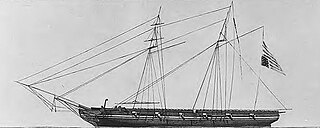
The West Indies Anti-Piracy Operations refer to the United States Navy presence in the Antilles, and surrounding waters, which fought against pirates. Between 1817 and 1825, the American West Indies Squadron constantly pursued pirates on sea and land, primarily around Cuba and Puerto Rico. After the capture of Roberto Cofresi in 1825, acts of piracy became rare and the operation was considered a success although limited occurrences went on until slightly after the start of the 20th-century.

HMS Lapwing was a 28-gun Enterprise-class sixth-rate frigate of the Royal Navy.

The invasion of Martinique in 1674 was an unsuccessful attempt by the Dutch Republic to conquer the Caribbean island of Martinique from France. In spite of overwhelming Dutch superiority in men and ships, the French won a decisive and unexpected victory.
HMS Grenada was the French schooner Harmonie, launched in 1800 and armed at Cayenne in 1803 as a privateer. Boats of a squadron of the British Royal Navy cut her out from the harbour of Le Marin, Martinique, on 16 November 1803. The citizens of Grenada purchased her and donated her to the Royal Navy, which commissioned her in 1804 as HMS Grenada. She was later converted to a brig. She captured nine small French privateers before being sold for breaking up in 1810.
Charles de Courbon, comte de Blénac was a French colonial administration who served as governor general of the French Antilles during the 17th century. He was an experienced soldier and fought for the king during the Fronde before becoming a naval officer in the French Navy. Towards the end of the Franco-Dutch War he led the land forces that captured Tobago from the Dutch before taking command of the French Antilles. During the Nine Years' War he was active in the struggle with the English and Dutch in the Windward Islands. He captured Sint Eustatius and Saint Kitts, and defended Martinique against a large English expedition in 1693.
HMS Morne Fortunee was the French privateer Regulus that British Royal Navy captured in 1804. In 1806 the Royal Navy commissioned her. She captured some small privateers and took part in a number of other engagements. She foundered in 1809.
